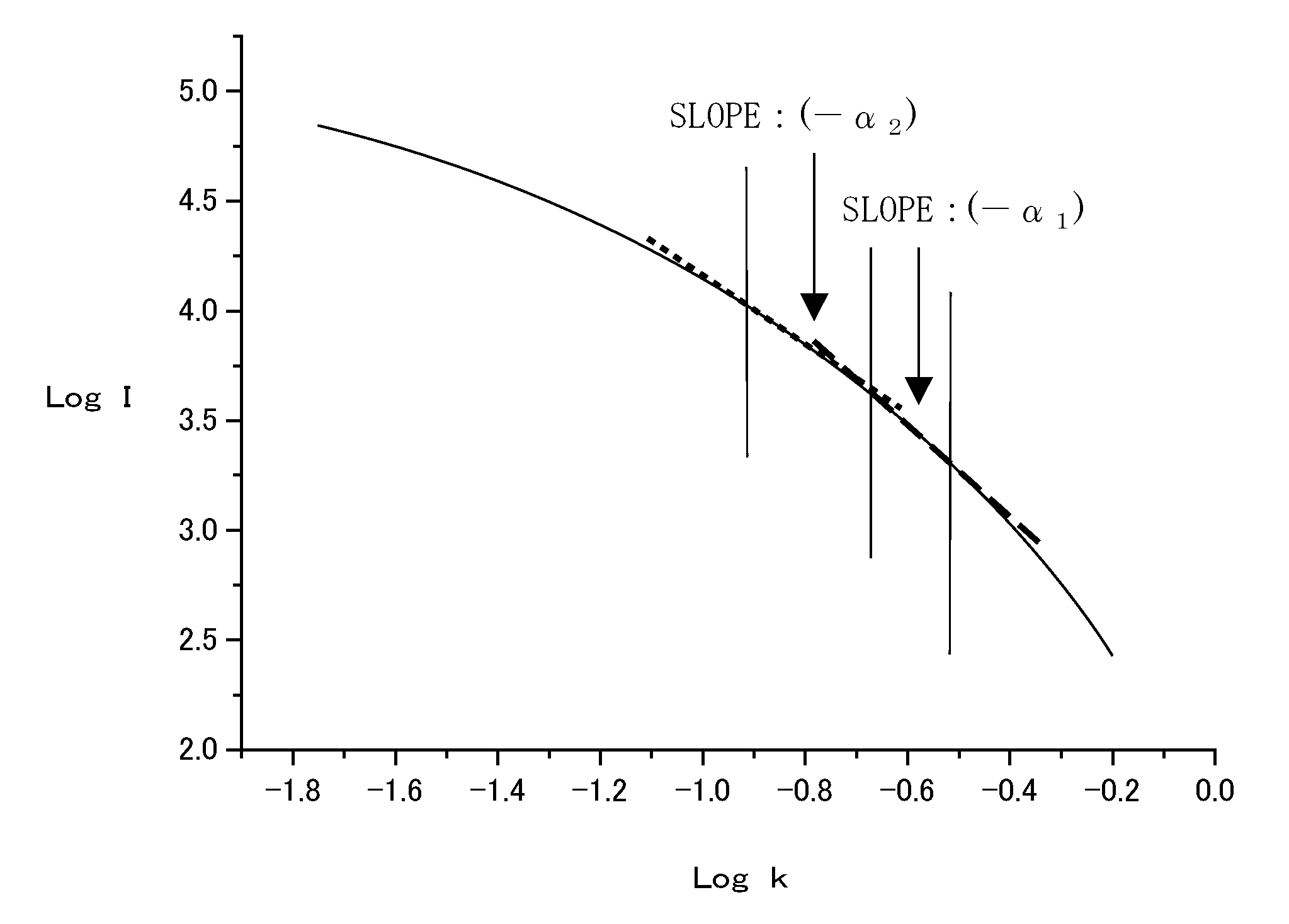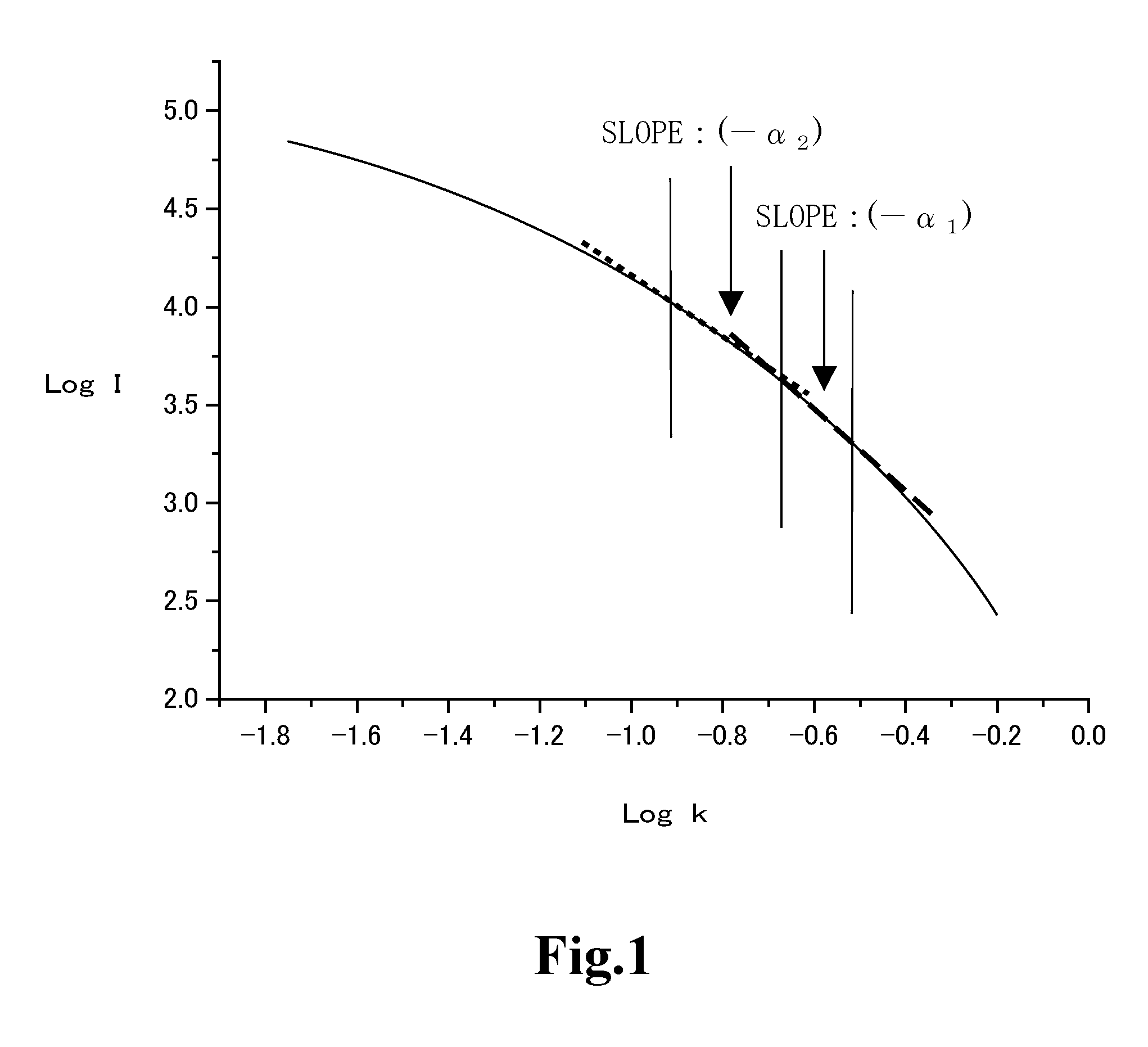Silica for cmp, aqueous dispersion, and process for producing silica for cmp
- Summary
- Abstract
- Description
- Claims
- Application Information
AI Technical Summary
Benefits of technology
Problems solved by technology
Method used
Image
Examples
examples
[0089]Now, the present invention is described in more detail byway of Examples. However, the present invention is not limited to these Examples.
[0090]It should be noted that measurement of various physical properties and the like in Examples and Comparative Examples below are performed by the following methods.
[0091](1) Measurement of Specific Surface Area:
[0092]The specific surface area was measured by a nitrogen adsorption BET one point method through use of a specific surface area measurement apparatus (SA-1000) manufactured by Sibata Scientific Technology Ltd.
[0093](2) Measurement of Particle Density:
[0094]A dry automatic density meter AccuPyc 1330 with 10 ml sample insert manufactured by Shimadzu Corporation was used and a He gas at a pressure of 0.16 Pa was used. The measurement temperature of a measurement instrument was kept at 25° C. through warm water circulation. As pretreatment of a sample, the sample was subjected to uniaxial press under the following conditions so as t...
examples 1 to 3
[0118]A closed triple tube burner having a center tube with an inner diameter of 100 mm was set in a closed reaction vessel, and a tetrachlorosilane (SiCl4) gas serving as a rawmaterial gas, hydrogen, and a mixed gas serving as a supporting gas containing air and oxygen mixed in advance were supplied to the center tube. Hydrogen and air were supplied to a first annular tube to form pilot flame. Air was allowed to flow through a second annular tube to prevent the adhesion of the silica to the burner. The amounts of impurities in the tetrachlorosilane gas were as follows: the amount of Fe was less than 0.1 ppm in terms of Fe2O3; the amount of Al was less than 0.1 ppm in terms of Al2O3; the amount of Ni was less than 0.1 ppm; the amount of Cr was less than 0.1 ppm; the amount of boron was less than 0.1 ppm; and the amount of phosphorus was 0.2 ppm. Hydrogen was supplied to the raw material gas containing tetrachlorosilane in a ratio of 100 mol % so as to be 1.15 times, 1.3 times, and 1...
example 4
[0119]A closed triple tube burner having a center tube with an inner diameter of 25 mm was used, and the burner configuration of the center tube, the first annular tube, and the second annular tube was set to be the same as those of Examples 1 to 3. Flow gas species flowing through each tube were also set to be the same as those of Examples 1 to 3, and the amounts of hydrogen and air to be supplied to the center tube were changed to set the adiabatic flame temperature to 2,260° C. Further, air was similarly allowed to flow through the reaction vessel so as to prevent burnout in a process. The fumed silica thus obtained was compressed by deaeration press to adjust the fumed silica to an apparent density of 50 g / L. The reaction conditions and the evaluation results of physical properties are respectively shown in Tables 1 and 2.
PUM
| Property | Measurement | Unit |
|---|---|---|
| Temperature | aaaaa | aaaaa |
| Fraction | aaaaa | aaaaa |
| Fraction | aaaaa | aaaaa |
Abstract
Description
Claims
Application Information
 Login to View More
Login to View More - R&D
- Intellectual Property
- Life Sciences
- Materials
- Tech Scout
- Unparalleled Data Quality
- Higher Quality Content
- 60% Fewer Hallucinations
Browse by: Latest US Patents, China's latest patents, Technical Efficacy Thesaurus, Application Domain, Technology Topic, Popular Technical Reports.
© 2025 PatSnap. All rights reserved.Legal|Privacy policy|Modern Slavery Act Transparency Statement|Sitemap|About US| Contact US: help@patsnap.com


